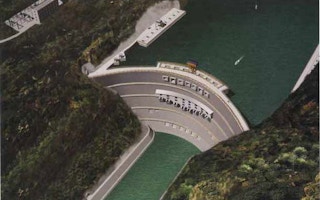China’s Three Gorges on Thursday marked the beginning of construction for a dam that will flood the last free-flowing portion of the middle reaches of the Yangtze, the country’s longest river.
The 30 billion yuan ($4.75 billion) Xiaonanhai dam is decried by environmentalists because it will flood a nature reserve designed to protect about 40 species of river fish.
Completion of the dam would turn the middle section of the Yangtze into a series of reservoirs, leaving “no space for fish”, said environmentalist Ma Jun, who has been active for over two years in trying to prevent the dam.
“This is the last one, the last section in 2,000 kilometers (1,250 miles) along the Yangtze that was left for endangered or local fish species. This would be their last habitat,” Ma told Reuters.
A ceremony was held to commence early-stage preparation, including building a road and laying power lines and water pipes, said Zhu Guangming, news department director at Three Gorges Corp.
“Construction of the dam itself will begin only after we get final approval,” Zhu said, declining to give cost estimates.
“The government will give due consideration to all aspects including environment impact before issuing a permit.”
The Xiaonanhai dam would be the last in a series of 12 dams along the Yangtze, the rest of which are all completed or under construction.
The series will stretch inland from the Three Gorges Dam, which has created an inland reservoir more than 600 km long that has allowed the city of Chongqing to develop into an inland port. When completed, Xiaonanhai dam is designed to produce 1.76 gigawatts, a fraction of the 22.50 GW that the Three Gorges Dam will produce when it reaches full capacity.
Awaiting final approval
The Chongqing municipal government is currently embroiled in a power struggle after the ambitious party secretary, Bo Xilai, was sacked earlier this month. The mega-city’s hard-charging police chief was also taken into custody by central authorities after spending a day in the nearest US consulate.
Preliminary approval for the dam was issued by the National Development and Reform Commission, China’s top planning agency, which also has the authority to issue final approval.
The boundaries of the nature reserve were earlier re-drawn to allow the construction of the even larger Xiangjiaba and Xiluodu dams.
According to NGO International Rivers, which opposes the construction of large hydro dams and has been critical of China’s ambitious hydropower plans, the Xiangjiaba dam will be 6.4 GW and the Xiluodu dam 13.86 GW.
China wants to raise installed power capacity by 470 gigawatts (GW) to 1,437 GW by 2015 — the largest in the world. At least 110 gigawatts of the new capacity will be from hydro power — equivalent to five Three Gorges hydropower projects. Current hydropower capacity is 216 GW, also the world’s largest.
The Three Gorges Dam is the world’s biggest power project and was controversial well before it began construction in 1994.
Objections ranged from the destruction of rare species to the flooding of historic towns and displacement of millions of people, to concerns that it would quickly silt up and lose its efficiency in generating power.
It produces about 2 percent of China’s power.
Subsequent audits of the Three Gorges project showed that many of the flooded communities were never properly resettled while the steep banks of the reservoir have been plagued by dangerous landslides as the water undermines the hillsides.
In January, China’s environment ministry told hydropower developers they must “put ecology first” and pay strict attention to the impact of their projects on local rivers and communities.










